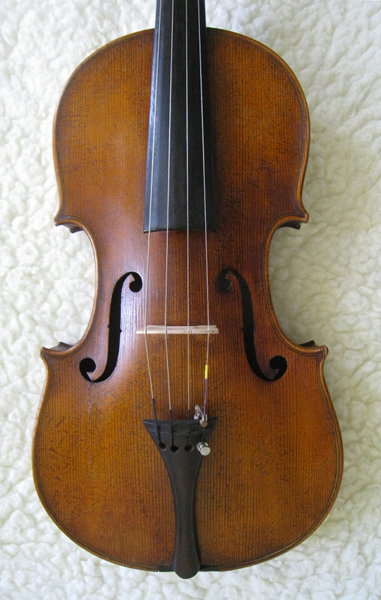
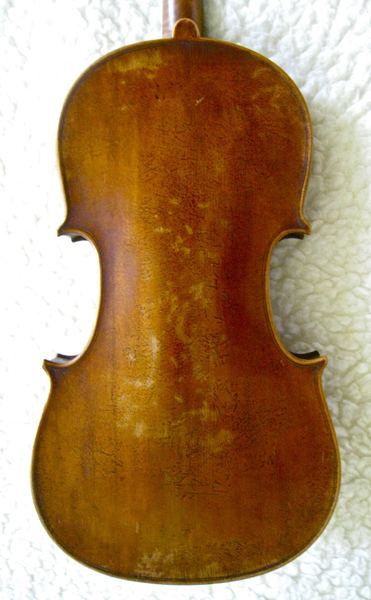
Jacob Stainer ? |
This violin was brought to this country from Austria-Hungary by my maternal grandfather in 1906. Originally, I did not care for the sound of this fiddle at all. It was weak and soft and shrill on top (old gut strings). The soundpost was a rudely pared mahogany colored octagon, quite thin and canted way out of position, the bridge was cupped and the tail gut was stiff. I regret not saving the old post, it could have been 'telling'. When the cover of 'The Strad', March 2010, featured a viola by Stainer from 1658, the similarities in the wood, finish, and the general modelling gave me a start. The table, a finely grained spruce, is loaded with toolmarks and the finish has a natural chestnut tone. The back is a slab cut of a wood that is unidentifiable by me. The button is a highly arched parabola in the Tyrolean tradition and the back shows signs of chipping rather than abrasion. |
 |
 |
The arching of the belly, although not greatly pronounced, is subtly graduated without any exaggerated fluting. |
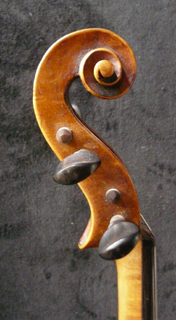 |
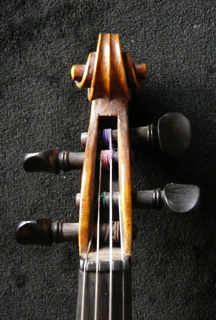 |
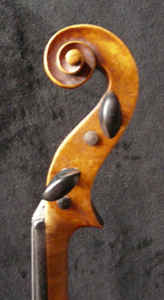 |
The original baroque head is integral with the neck. The scrollwork has an intense panache and is very deftly carved with a 'drooping' lobe. The neck is set to the proper camber for modern convention, as is the fretboard. |
 |
I installed a new post and strung it with Thomastic dominants and my luthier cut and fit a new Aubert bridge loaded with 'nutmeg' -- an immediate transformation! I now have something worth working with, and adjusting it from time to time, sweeten little by little, and participate in its reawakening. |
MEASURMENTS |
Here again, (Ab.L) we see the abruptly pointed corners with their exagerrated flair that we saw in the Raymann. |
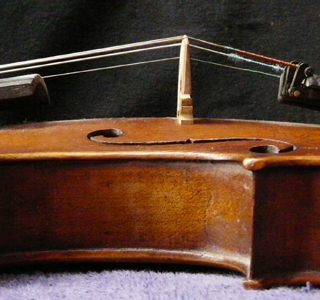 |
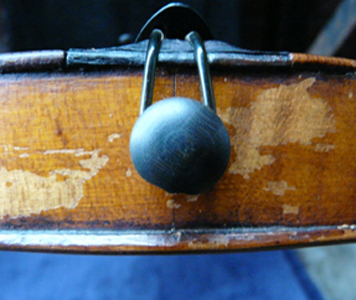 |
The instrument is very solidly constructed and has no apparent deficiencies. Only the back and areas of the rib near the tailpin show flaking of the finish. |
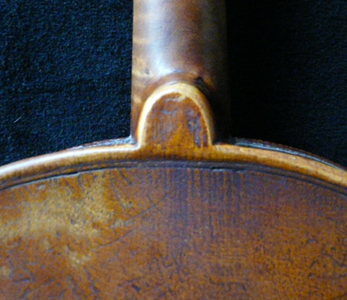 |
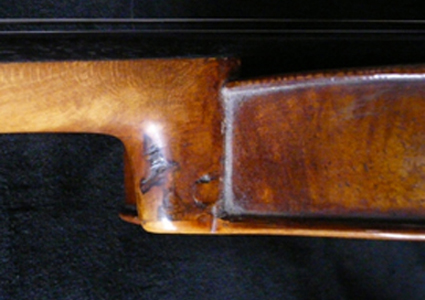 |
The high, eliptical button is typical of Tyrolean work. The scarring of the heel (ab. R) could be the result of a neck reset -- the difficult extraction of the wrought nails used at that time to reinforce the joining of the upper block to the neck at the heel. The heads of the stubborn nails may have been beaten through the block and out at the heal causing these ruptures. |
SOUND & PLAYABILITY |
return to the gallery page by clicking the link below http://stnichsigns.com/Makers'Orphans.html |